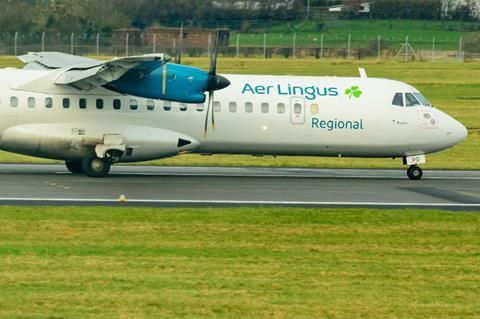Gusting winds experienced during the flare led an Emerald Airlines ATR 72-600 to touch down heavily at Belfast City, damaging its landing-gear, before the turboprop executed a go-around and diverted.
The aircraft, arriving from Edinburgh on 30 December last year, was conducting a second approach to Belfast City’s runway 22 – the first having been aborted owing to destablising gusting winds.
“Conditions for the second attempt were more benign,” says the UK Air Accidents Investigation Branch. “The approach was reportedly uneventful until the aircraft was flared for landing.”
It states that wind effects resulted in the aircraft’s landing “firmly” on its left-hand main landing-gear, before bouncing and contacting the runway nose-gear first.
The captain initiated a go-around and the aircraft diverted to Belfast Aldergrove – the city’s international airport – where it landed without further incident.

None of the 53 passengers and four crew members was injured, but the ATR, which had experienced a 2.2g impact, sustained a bent nose-wheel axle and nose tyre damage.
ATR determined that both the nose-gear and left main gear had experienced loads beyond permissible limits, requiring replacement. The aircraft involved, G-CMMT, is a 2013 airframe.
Investigators found that, during the second approach, the southeast wind was within the 28kt recommended maximum crosswind limit.
Flight-data recorder information showed that, below 500ft, the airspeed had fluctuated from the target approach speed of 120kt by around 10kt, both above and below.
As the ATR descended below 70ft the airspeed “briefly became more unstable”, says the inquiry, averaging about 134kt as the turboprop neared the flare, then dropping to 124-130kt in the 2s before touchdown.
According to the UK aeronautical information publication, pilots approaching Belfast City’s runway 22 during southeast winds should anticipate turbulence or windshear.


























